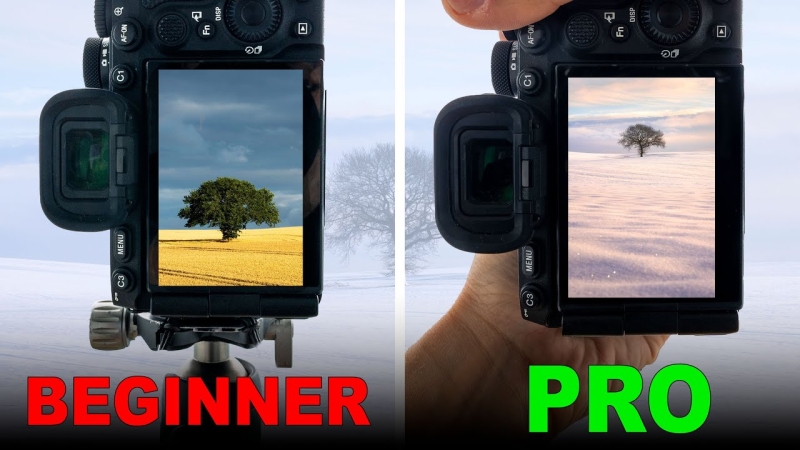Contents
Landscape photography is one of the most rewarding genres of photography, and it’s often the very reason why many of us get drawn into photography in the first place. There’s simply nothing quite like capturing awe-inspiring light in beautiful scenery. However, it can be deceptively challenging, especially for beginners.
From nailing the perfect exposure to choosing the right light and gear, there’s a lot to consider. In this video, Mads Peter Iversen walks us through seven common mistakes beginners make in landscape photography and shares his practical tips to help you improve your skills.
1. Relying Too Much on Your Camera Screen
One of the biggest mistakes beginners make is trusting their camera’s LCD screen to judge exposure. The screen can be deceiving—its brightness settings can make your photos look perfectly exposed when they’re actually under or overexposed.
Pro Tip: Learn to use your camera’s histogram. It’s a graphical representation of the light in your image and shows whether you’ve captured details in the shadows, midtones, and highlights. Additionally, enable “zebra stripes” (if your camera has this feature) to warn you when parts of your image are overexposed.
Bonus Tip: Adjust your screen brightness based on the shooting conditions. Lower it at night to preserve your night vision and crank it up during the day for better visibility. Just remember, the screen is a tool for composition, not exposure!
2. Not Returning to the Same Location
As a beginner, you might think that great landscape photos happen on the first try. Spoiler alert: they rarely do! Mads says that some of his best shots came from revisiting the same location multiple times.
Pro Tip: Persistence pays off. Return to the same spot under different lighting conditions, weather, or seasons. Over time, you’ll learn how to work the scene and capture its essence. Plus, documenting a location over time can turn into a fascinating project.
Mads explains that revisiting places at different times of the year always teaches him something new. He’s visited some locations in Denmark dozens of times, and each time it’s worth it.
3. Only Shooting During Golden Hour
Golden hour (the hour after sunrise and before sunset) is magical for landscape photography, but it’s not the only time to shoot. Beginners often overlook the potential of neutral light during other times of the day.
Pro Tip: Neutral light, especially during overcast or foggy conditions, can create soft, even lighting that’s perfect for capturing subtle details and textures. Winter is also a great time to shoot because the sun stays low all day, providing soft light even at midday.
Creative Idea: Combine neutral light with morning fog or mist for ethereal, moody landscapes. Some of Mads’ favourite shots were taken in these conditions.
4. Ignoring Your Camera’s Favorites Menu
Modern cameras are packed with features, and scrolling through menus to find the right setting can be frustrating. Beginners often waste time searching for functions instead of focusing on their composition.
Pro Tip: Set up a favorites menu with your most-used settings. For landscape photography, this might include the intervalometer, screen brightness, and exposure warnings. This simple step can save you hours and make your shooting experience much smoother.
Mads’ Favorites Menu: Intervalometer, screen brightness, EVF/screen toggle, and focus peaking.
5. Not Building a Compatible Gear Ecosystem
Nothing ruins a shoot faster than realizing your gear isn’t compatible. Beginners often overlook the importance of having a cohesive system of cameras, lenses, and accessories.
Pro Tip: Stick to one camera brand or lens system to ensure compatibility. For example, if you shoot Sony, make sure your backup camera uses the same lens mount. This way, you can swap lenses and batteries between bodies without hassle.
6. Overlooking the Power of a Telephoto Lens
Wide-angle lenses are a staple in landscape photography, but beginners often underestimate the creative potential of telephoto lenses.
Pro Tip: Telephoto lenses compress the scene, making foreground and background elements appear closer together. This can add depth and drama to your photos. Use a telephoto lens to isolate details, create layered compositions, or emphasize repeating patterns in the landscape.
7. Dismissing the Off-Seasons
Many beginners think landscape photography is only worth pursuing during the “peak” seasons—autumn colours, spring blooms, or snowy winters. But the so-called “off-seasons” can be just as rewarding.
Pro Tip: Focus on light and atmosphere rather than seasonal features. Overcast days, fog, and stormy weather can create moody, unique images.
Creative Challenge: Next time you’re out during the off-season, look for interesting textures, patterns, or dramatic skies. You might be surprised by what you find!
Remember, the key to improvement is practice, persistence, and a willingness to experiment. Every mistake is an opportunity to learn. By avoiding these common pitfalls and embracing the tips above, you’ll be well on your way to capturing stunning landscapes.

